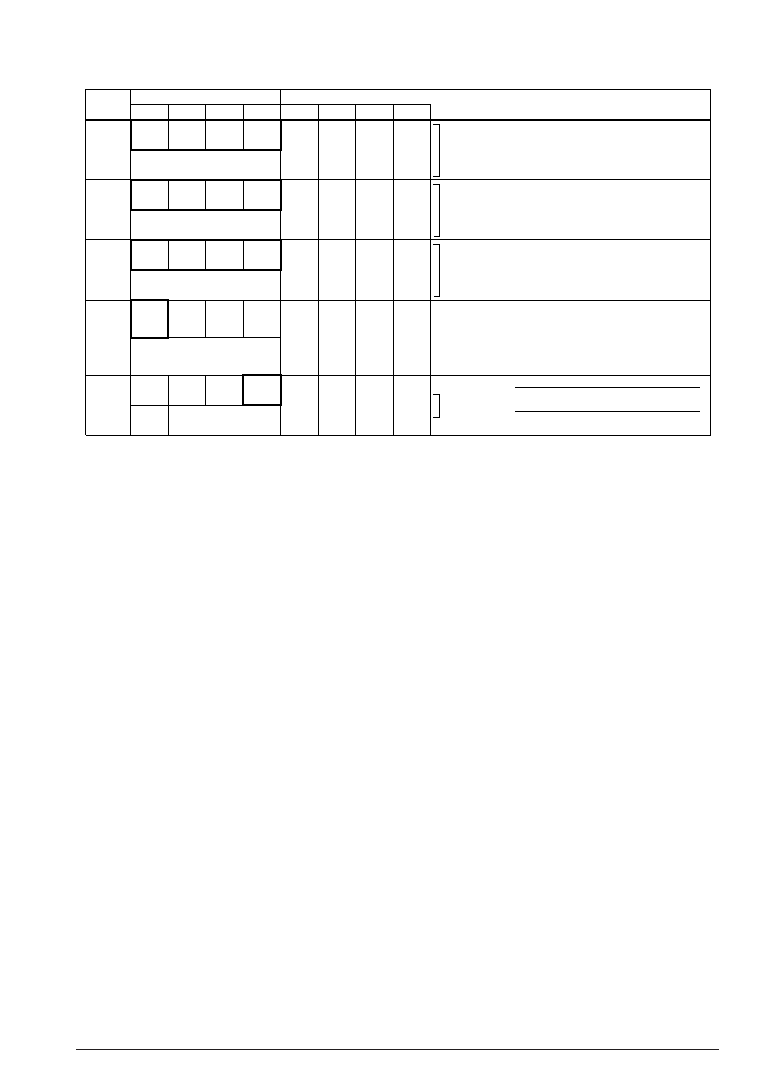- 您現(xiàn)在的位置:買賣IC網(wǎng) > PDF目錄98068 > S1C6F567D0A0100 MICROCONTROLLER, UUC141 PDF資料下載
參數(shù)資料
| 型號: | S1C6F567D0A0100 |
| 元件分類: | 微控制器/微處理器 |
| 英文描述: | MICROCONTROLLER, UUC141 |
| 封裝: | DIE-141 |
| 文件頁數(shù): | 156/208頁 |
| 文件大小: | 1561K |
| 代理商: | S1C6F567D0A0100 |
第1頁第2頁第3頁第4頁第5頁第6頁第7頁第8頁第9頁第10頁第11頁第12頁第13頁第14頁第15頁第16頁第17頁第18頁第19頁第20頁第21頁第22頁第23頁第24頁第25頁第26頁第27頁第28頁第29頁第30頁第31頁第32頁第33頁第34頁第35頁第36頁第37頁第38頁第39頁第40頁第41頁第42頁第43頁第44頁第45頁第46頁第47頁第48頁第49頁第50頁第51頁第52頁第53頁第54頁第55頁第56頁第57頁第58頁第59頁第60頁第61頁第62頁第63頁第64頁第65頁第66頁第67頁第68頁第69頁第70頁第71頁第72頁第73頁第74頁第75頁第76頁第77頁第78頁第79頁第80頁第81頁第82頁第83頁第84頁第85頁第86頁第87頁第88頁第89頁第90頁第91頁第92頁第93頁第94頁第95頁第96頁第97頁第98頁第99頁第100頁第101頁第102頁第103頁第104頁第105頁第106頁第107頁第108頁第109頁第110頁第111頁第112頁第113頁第114頁第115頁第116頁第117頁第118頁第119頁第120頁第121頁第122頁第123頁第124頁第125頁第126頁第127頁第128頁第129頁第130頁第131頁第132頁第133頁第134頁第135頁第136頁第137頁第138頁第139頁第140頁第141頁第142頁第143頁第144頁第145頁第146頁第147頁第148頁第149頁第150頁第151頁第152頁第153頁第154頁第155頁當(dāng)前第156頁第157頁第158頁第159頁第160頁第161頁第162頁第163頁第164頁第165頁第166頁第167頁第168頁第169頁第170頁第171頁第172頁第173頁第174頁第175頁第176頁第177頁第178頁第179頁第180頁第181頁第182頁第183頁第184頁第185頁第186頁第187頁第188頁第189頁第190頁第191頁第192頁第193頁第194頁第195頁第196頁第197頁第198頁第199頁第200頁第201頁第202頁第203頁第204頁第205頁第206頁第207頁第208頁

S1C6F567 TECHNICAL MANUAL
EPSON
43
CHAPTER 4: PERIPHERAL CIRCUITS AND OPERATION (I/O Ports)
Table 4.6.6.1(b) Control bits of I/O ports
Address
Comment
D3
D2
Register
D1
D0
Name
Init 1
10
FF4CH
IOC33
IOC32
IOC31
IOC30
R/W
IOC33
IOC32
IOC31
IOC30
0
Output
Input
P30–P33 I/O control register
FF4DH
PUL33
PUL32
PUL31
PUL30
R/W
PUL33
PUL32
PUL31
PUL30
1
On
Off
P30–P33 pull-up control register
FF4EH
P33
P32
P31
P30
R/W
P33
P32
P31
P30
– 2
High
Low
P30–P33 I/O port data
FF61H
EXLCDC ALOFF
ALON
LPAGE
R/W
EXLCDC
ALOFF
ALON
LPAGE
0
1
0
Enable
All Off
All On
F100-F14F
Disable
Normal
F000-F04F
Expanded LCD driver signal control
LCD all Off control
LCD all On control
Display memory area selection (when 1/8 duty is selected)
General-purpose register when 1/16, 1/17 duty is selected
0
Clk-sync. master
2
Async. 7-bit
1
Clk-sync. slave
3
Async. 8-bit
[SMD1, 0]
Mode
[SMD1, 0]
Mode
FF70H
0
SMD1
SMD0
ESIF
RR/W
0 3
SMD1
SMD0
ESIF
– 2
0
SIF
I/O
Unused
Serial I/F
mode selection
Serial I/F enable (P1x port function selection)
*1 Initial value at initial reset
*2 Not set in the circuit
*3 Constantly "0" when being read
(1) Selection of port function
EXLCDC: Expanded LCD driver signal control register (FF61HD3)
Sets P22 and P23 to the CL signal and the FR signal output ports.
When "1" is written: CL/FR signal output
When "0" is written: I/O port
Reading: Valid
When setting P22 to the CL (LCD synchronous signal) output and P23 to the FR (LCD frame signal)
output, write "1" to this register and when they are used as I/O ports, write "0".
The CL and FR signals are output from the P22 terminal and P23 terminal immediately after the functions
are switched by the EXLCDC register. In this case, the control registers for P22 and P23 can be used as
general purpose registers that do not affect the output.
At initial reset, this register is set to "0".
ESIF: Serial interface enable register (FF70HD0)
Selects function for P10–P13.
When "1" is written: Serial interface input/output port
When "0" is written: I/O port
Reading: Valid
When using the serial interface, write "1" to this register and when P10–P13 are used as the I/O port,
write "0". The terminal configuration within P10–P13 that are used for the serial interface is decided by
the transfer mode (7-bit asynchronous, 8-bit asynchronous, clock synclonous slave, clock synchronous
master) selected with the SMD1 and SMD0 registers.
In the clock synchronous slave mode, all the P10–P13 ports are set to the serial interface input/output
port. In the clock synchronous master mode, P10–P12 are set to the serial interface input/output port and
P13 can be used as the I/O port. In the 8/7-bit asynchronous mode, P10 and P11 are set to the serial
interface input/output port and P12 and P13 can be used as the I/O port.
At initial reset, this register is set to "0".
相關(guān)PDF資料 |
PDF描述 |
|---|---|
| S1C6N3B0D0A0100 | MICROCONTROLLER, UUC54 |
| S1C6P366D0A0100 | 4-BIT, FLASH, 4.1 MHz, MICROCONTROLLER, UUC102 |
| S1C6P466D0A0A00 | MICROCONTROLLER, UUC140 |
| S1C6S2L7D | 4-BIT, MROM, 0.032 MHz, MICROCONTROLLER, UUC58 |
| S1C6S2A7F | 4-BIT, MROM, 0.08 MHz, MICROCONTROLLER, PQFP60 |
相關(guān)代理商/技術(shù)參數(shù) |
參數(shù)描述 |
|---|---|
| S1C-6-S | 制造商:GRIPCO 功能描述: |
| S1C7309X | 制造商:SAMSUNG 制造商全稱:Samsung semiconductor 功能描述:B/W CCD PROCESSOR |
| S1C7309X01 | 制造商:SAMSUNG 制造商全稱:Samsung semiconductor 功能描述:B/W CCD PROCESSOR |
| S1C88349 | 制造商:EPSON 制造商全稱:EPSON 功能描述:8-bit Single Chip Microcomputer |
| S1C88649 | 制造商:EPSON 制造商全稱:EPSON 功能描述:8-bit Single Chip Microcomputer |
發(fā)布緊急采購,3分鐘左右您將得到回復(fù)。